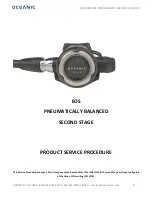
Observation
Possible cause
Recommended action
There is no signal or a low
signal
Note:
Samples are stable on
the instrument for 16–24 hours.
Determine if samples will be
stable if a re-injection is
recommended, the plan the re-
injection accordingly.
(continued)
The sample had a high
concentration of salt.
Dilute or desalt the samples.
There was an excess of
unlabeled template competing
with the fragments labeled with
dye during the injection.
Dilute or desalt the samples.
See:
•
DNA Sequencing by Capillary
Electrophoresis Chemistry Guide Second
Edition (Pub. No. 4305080)
•
DNA Fragment Analysis by Capillary
Electrophoresis User Guide (Pub.
No. 4474504)
A capillary array tip is blocked.
Flush the capillary array.
1. Touch Settings
4
Cartridge
4
Cartridge
maintenance.
2. Touch Refresh PDS.
3. Touch to close the screen when the
function ends.
Replace the cartridge if the problem persists.
The cartridge is damaged.
Inspect the cartridge for damage. Replace the
cartridge if there is damage.
There was poor resolution,
poor size quality, or a poor
sequencing result
The samples degraded over
time while on the instrument.
Analyze a maximum of 48 samples on a plate
for long run modules. Additional samples will
take more than 24 hours and the samples can
degrade.
Note:
Thermal breakdown of samples is
normal. Samples are stable for 16–24 hours on
the instrument.
Use Hi
‑
Di
™
Formamide to prepare the samples.
Sample stability is optimal in Hi
‑
Di
™
Formamide.
The temperature and/or
humidity in the lab is too high
for optimal sample stability.
Ensure that the conditions in the lab are within
the operating range for the instrument (15–
30°C and 20–80% relative humidity).
Sample stability can be lower near the high
end of the operating range of the instrument
for temperature and humidity.
Use 20 µL of sample instead of 10 µL.
A larger sample volume can reduce sample
breakdown under hot and humid conditions.
There was a sporadic data
quality failure.
Note:
A sporadic data quality
failure can happen occasionally.
Repeat the injection.
Appendix A
Troubleshooting
Sample and data troubleshooting
A
176
SeqStudio
™
Genetic Analyzer Instrument and Software User Guide
















































